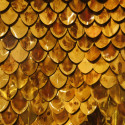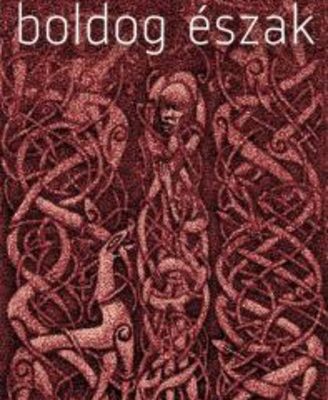Fishhooks
One day, a Scotsman, a childhood friend, showed me his collection of fishhooks.
“Look,” he said. “This is a real museum. These fishhooks you see are works of art.
To lure salmon that feed on iridescent swarms of flies, we devise delicate fishhooks
in gold, green, blue, and violet. Some are made of pheasant feathers (and you know
pheasants are as magnificent as peacocks, enhanced by a wild soul’s indescribable
grace). These fishhooks require patient work and cunning skill.”
I looked at those strange jewels of torture and death. They were indeed very beautiful—
brilliant as glory, dazzling as love.
“And,” my interlocutor continued, “the salmon that believes it has snatched the rainbow-opal
wings of drifting flies feels its throat torn clean through by a steel hook. Struggle as it
might, it is the Enemy’s prey.”
As I bent over those jewels of torture and death, my friend the Scotsman asked,
“What do you think of my collection?”
“I think,” I replied, “that the Bible (which I have heard you quote at length), has not lied,
and that God truly did make men in his own image.”
__
Hameҫons
Un Écossais, ami de mon enfance, me montra un jour sa collection d’hameçons.
« Regardez, me dit-il, ceci est un véritable musée. Ce sont des objets d’art que les hameçons
que vous voyez. Pour attirer le saumon, qui se nourrit de mouches au vol irisé, nous inventons
de légers hameçons dorés, verts, bleus et violets. Quelques-uns sont façonnés avec des plumes
de faisan : et vous savez que le faisan a toute la magnificence du paon, augmentée de la grâce
inexprimable des êtres sauvages. Ces hameçons exigent un patient travail et une ingéniosité savante. »
Je regardai ces étranges joyaux de torture et de mort. Ils étaient fort beaux en effet, brillants
comme la gloire, étincelants comme l’amour.
« Et, poursuivit mon interlocuteur, le saumon qui croit happer les ailes d’arc-en-ciel et d’opale
des mouches errantes, sent sa gorge déchirée implacablement par le crochet d’acier. Il a beau
se débattre, il est la proie de l’Ennemi. »
Comme je me penchais sur les joyaux de torture et de mort :
« Que pensez-vous de ma collection? me demanda mon ami l’Ecossais.
— Je pense, lui répondis-je, que la Bible (dont je vous ai entendu prodiguer de si copieuses
citations) n’a pas menti, et que véritablement Dieu a créé les hommes à son image. »
__
Renée Vivien (1877-1909) was a highly public figure in the early 20th-century, but her poetry and prose went neglected long after her premature death. Born in England to American and British parents, she moved to Paris in her early adulthood. In Paris, she lived openly as a lesbian, running in many of the same circles as Natalie Clifford Barney and Colette. Vivien’s œuvre includes several collections of poetry, translations of Sappho, short stories, and a novel. Many of her contemporary critics reacted strongly against her writing due to its frank portrayals of lesbianism and feminism, and only recently have French writers and critics revived significant interest in Vivien’s work.
Cara Dees is an MFA candidate in Translation at the University of Arkansas and holds an MFA in Poetry from Vanderbilt University. A former English teacher in France, she is the recipient of an Academy of American Poets Prize from the University of Wisconsin-Madison, a scholarship from the Sewanee Writers’ Conference, and the 2015 Miller Williams Translation Award. Her poetry was also nominated for a 2015 Pushcart Prize. Her most recent work appears or is forthcoming in Beloit Poetry Journal, Indiana Review, Iron Horse Literary Review, The Journal, Southern Humanities Review, Unsplendid, and other publications.



